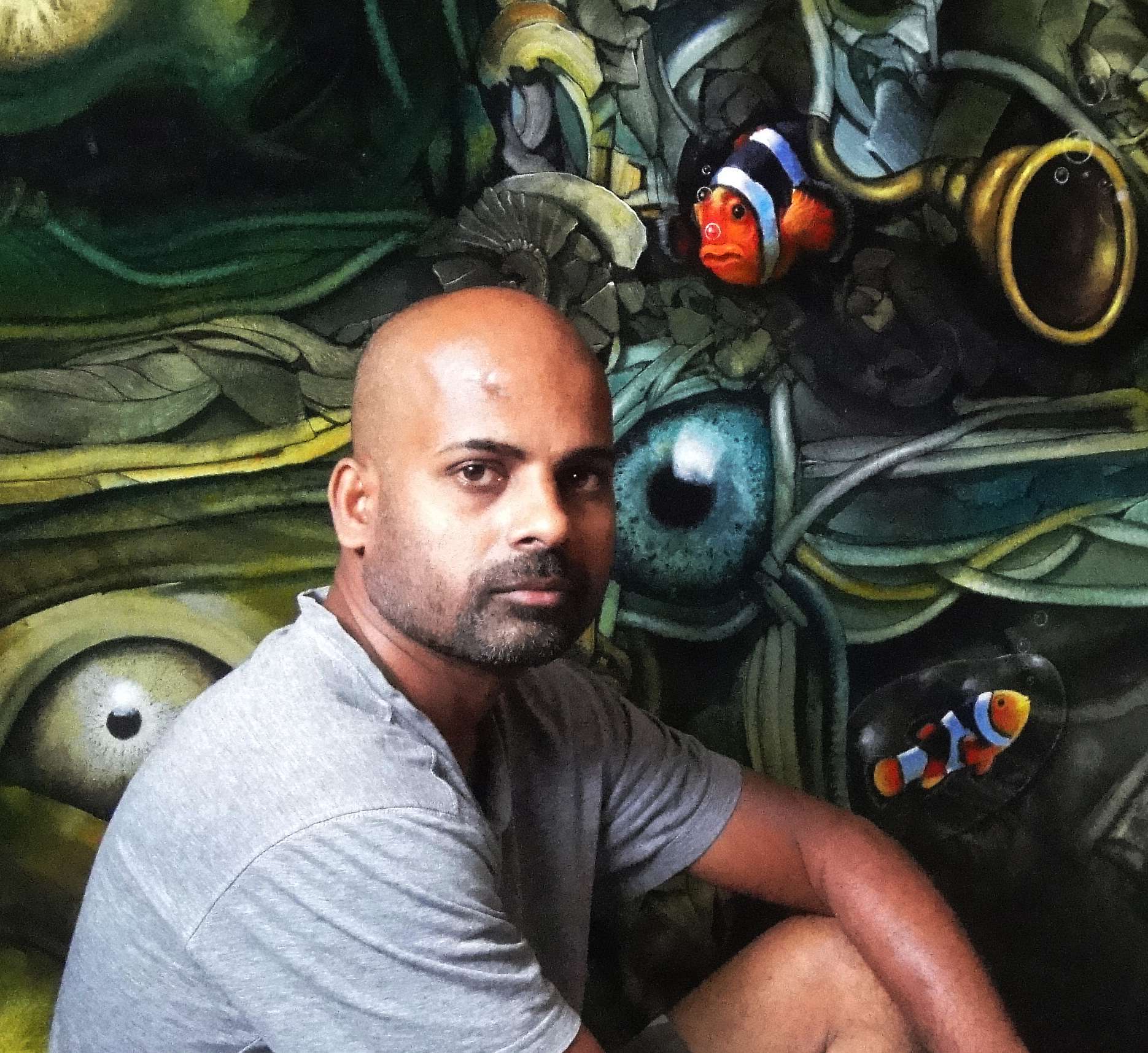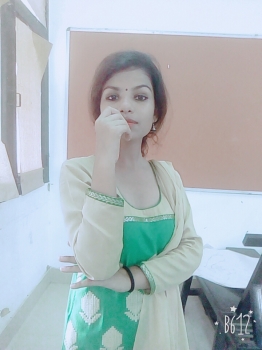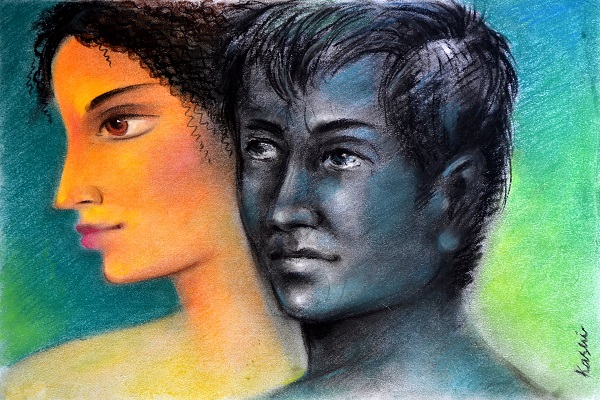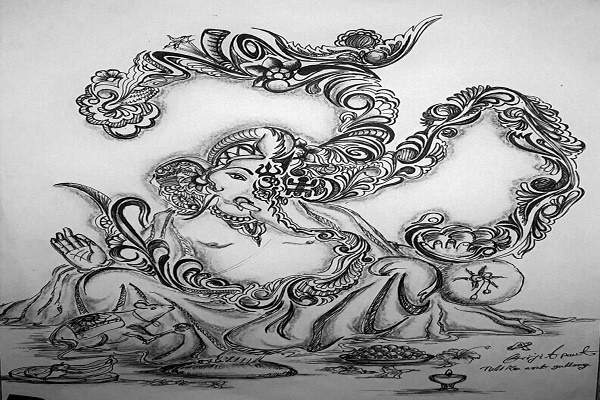
Since the beginning of time, charcoal drawings have captivated art lovers with their ageless beauty and startling monochrome compositions. In the realm of art, the attraction of black-and-white imagery occupies a particular position because it conveys a feeling of depth and mystery. What if, though, we told you that there was a method for you to improve your charcoal paintings even further? You have the chance to give your projects new life by adding dimension and color, which will produce aesthetically amazing works of art that stand out from the crowd.
In this post, we'll examine the strategies and tactics that artists may use to break out from the usual monochromatic palette and add depth and color to their charcoal works. This priceless advice and insights are intended to motivate and inspire you to push the limits of your creativity, regardless of whether you are an accomplished artist with years of experience or a beginning enthusiast. You may produce works that not only capture the spirit of the subject but also engage and fascinate people in a brand-new way by realizing the full potential of your charcoal artworks.
Exploring Value and Contrast
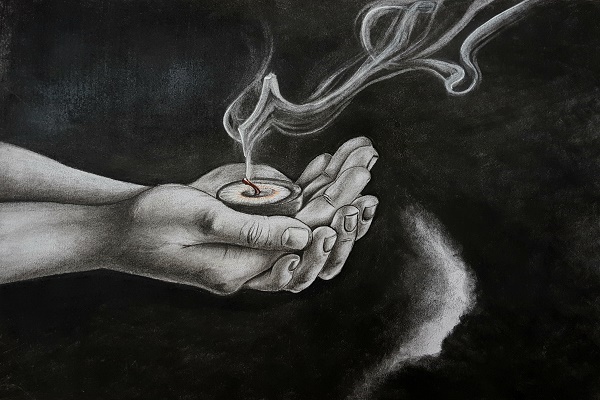
Value and contrast are essential components that serve as the framework for every artwork, and they are equally important in the context of charcoal paintings. The illusion of depth, volume, and shape may be created by artists by adjusting the light and dark values within a composition. A more heightened sense of realism and three-dimensionality may be created in the setting of charcoal paintings by subtly incorporating shades of grey and varying the intensity of blacks, which makes the artwork appear to actually come to life on the canvas.
In order to use value and contrast in charcoal works successfully, it's important to experiment with a variety of methods that improve the interaction between light and shadow. For instance, cross-hatching adds crossing lines to create texture and tonal changes whereas hatching includes drawing parallel lines in the direction of the intended form or contour. These methods may be used to illustrate a variety of surfaces, such as the smoothness of a mirrored surface or the roughness of tree bark, giving the artwork depth and dimension.
Another method for generating textures and enhancing the impression of light and shadow on the eye is stippling. Artists can replicate the look of various surfaces and give a feeling of depth and tactility by employing small, distinct dots or markings. When capturing the fine details of items or the play of light on diverse surfaces, stippling may be especially successful.
It's important to keep a close watch on the items or topics being painted when working with charcoal. Artists may efficiently capture the spirit of their topics and convey them onto the canvas by analyzing the distinctive forms, structures, and surfaces. Artists may depict their subjects in a way that seems genuinely alive and believable by paying particular attention to how light interacts with the objects, throwing shadows and generating highlights.
Additionally, experimenting with various tonal values within the charcoal medium may significantly improve the richness and depth of a picture. Artists may convey a feeling of space, depth, and mood by deftly adjusting the intensity of blacks and the nuances of grey. The delicate balance of light and dark parts can influence the artwork's overall tone and effect, grabbing the viewer's attention and creating strong feelings.
Read More: Tutorial about Charcoal Paintings Techniques: How to Draw With Charcoal
Introducing Accents of Colour

While charcoal drawings have long been linked to the traditional black-and-white aesthetic, the thoughtful use of color accents may significantly alter the composition as a whole. Carefully chosen colors may make a significant difference by generating a harmonic balance within the artwork, highlighting focus areas, and providing visual appeal.
Consider using soft pastels or colored pencils to add color to your charcoal works. These mediums enable the careful application of fine colors over the surface of the charcoal. You may make certain components come to life by applying color judiciously and precisely, such as vivid flowers, fascinating eyes, or intricate patterns. The addition of color in these spots produces a vibrant contrast with the monochrome background, resulting in an attention-grabbing composition.
It's crucial to keep the artwork's overall composition and harmony in mind while adding color accents. The selection of colors should be carefully considered to ensure that they enhance and match the subject matter. Cool colors may provide a quiet and relaxing ambiance, while warm colors can convey a feeling of vibrancy and enthusiasm. In your charcoal drawings, you may successfully evoke the ideal mood and ambiance by comprehending the emotional influence of various colors.
The trick to incorporating color accents properly is to keep the monochromatic and chromatic components in harmony. The use of color should be deliberate and intentional, enhancing the main theme or focal point of the artwork. You may direct the viewer's eyes and establish a visual hierarchy inside the picture by strategically using color.
When investigating the use of color in charcoal works, experimentation is essential. Try out several methods and strategies to see which suits your artistic vision the best. Create depth and complexity by gradually adding layers of color and allowing each hue to interact with the underlying charcoal. Investigate blending methods to effortlessly combine the monochromatic tones with the color accents, resulting in a unified and pleasing visual experience.
Blending Techniques for Seamless Transitions
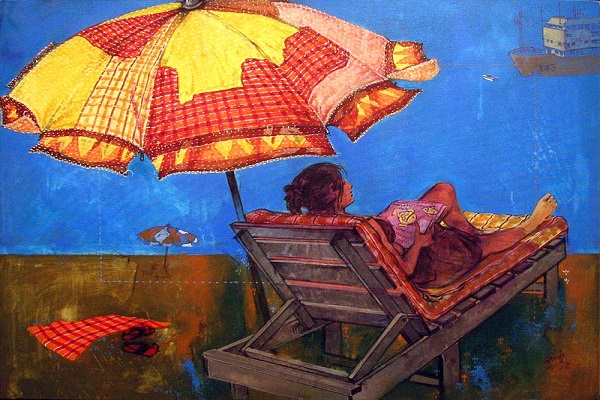
Learning blending methods is crucial if you want your charcoal paintings to successfully merge monochrome and color. When you can switch between black and white and color with ease, you can produce artwork that is both aesthetically arresting and expertly executed.
It's crucial to experiment with different tools while learning about blending methods in order to find the ones that best fit your creative preferences and the results you're going for. You may generate seamless gradations and transitions between colors and values by using blending tools like tortillons, paper stumps, and soft brushes. Each tool has distinctive qualities that provide varying degrees of control and texture throughout the mixing process.
Consider layering various colours and tints on the surface of your charcoal painting while you practice mixing. The conflicting components of monochrome and color may be integrated into a smooth fusion of tones by meticulously applying and mixing each stroke. A united artwork that emits a feeling of coherence and visual harmony is the result of this careful method, which calls for patience and attention to detail.
Keep in mind the characteristics of the materials you are utilizing while combining colors with charcoal. The natural softness and smudginess of charcoal make blending both easier and more difficult. To produce the desired results and preserve the integrity of the underlying charcoal lines, it is essential to regulate the pressure and direction of your blending strokes.
Additionally, mastering the fundamentals of color theory may significantly improve your mixing methods. You can design seamless transitions and aesthetically pleasing mixes by thinking about how colors interact with one another. When combining colors, pay attention to analogous and complimentary hues as well as the impacts of warm and cold tones. With this information, you'll be more equipped to make deliberate choices that lead to harmonious and aesthetically attractive color combinations.
You may hone your abilities and create your own distinctive style by regularly practicing and experimenting with mixing methods. Accept trial and error as a necessary part of the creative process since it is only through research and discovery that you will discover new options and methods that are most effective for your artistic expression.
Also Check: Charcoal Paintings - A Right Choice for Expressive Art
Embracing Mixed Media
For painters, charcoal paintings are a rich and expressive medium, and the use of mixed media methods may elevate them to new levels. You may increase the potential of your artwork and produce fascinating visual experiences that break conventional bounds by integrating complementary mediums like watercolours, acrylics, or digital additions.
Adding watercolour washes that are transparent to your charcoal works is one method to include mixed media. This method may be used to provide delicate highlights or ethereal, ambient backdrops to your artwork. A delicate and dreamy look may be created by layering translucent watercolors over your charcoal background, giving your artwork more depth and texture.
Another choice is to use acrylic paints to add bold splashes of color. Acrylics are a flexible and colorful media that may give select parts of your work a dynamic vitality. The combination of the monochrome charcoal with the vibrant colours of acrylic paints provides a visually arresting contrast that grabs the viewer's attention whether you decide to paint with broad strokes or precise details.
Mixed media charcoal paintings may also be created using digital tools and software in addition to conventional materials. Thanks to technological improvements, painters may now use a variety of digital brushes, textures, and effects to enhance their work. Digital improvements provide you with a world of creative possibilities, letting you to around with unusual textures, color combinations, and visual effects that may take your charcoal drawings to the next level.
By embracing mixed media approaches, you may explore and express yourself while also broadening your range of artistic expression. You may produce works of art that have a multifaceted aspect and engage the audience on several sensory levels by fusing various media. The use of mixed media inspires you to experiment with novel approaches, stretch the limits of your creativity, and find fresh methods to express your artistic vision.
It's crucial to think about the harmony and balance between the various aspects when using mixed media into your charcoal paintings. You'll learn through experience and experimentation how to successfully combine several materials to produce a unified visual result. Give yourself permission to experiment with various pairings and methods since doing so frequently yields fascinating and surprising artistic discoveries.
Telling a Story
Charcoal drawings are no exception to the extraordinary ability of art to narrate tales and elicit emotions. You may establish a stronger bond with your audience and provide a more immersive and interesting experience by including story aspects into your artwork. Incorporating storytelling elements may enhance the emotional effect of your charcoal works, whether you are producing a fascinating portrait, a breathtaking landscape, or an insightful abstract piece.
Consider the idea or feeling you wish to communicate before starting a new piece of art. Think about how you may utilize color and dimension to strengthen and emphasize this statement. Although charcoal paintings already have a certain feeling of depth and texture, you may further improve the narrative quality of your work by carefully inserting extra components.
One effective technique for communicating meaning and inspiring the viewer's imagination is symbolism. Symbolic items or components can stand in for thoughts, feelings, or notions that are in line with the main subject matter of your artwork. A fading flower, for instance, can represent time passing or the frailty of life, while a chain snapped might represent freedom or release. By incorporating these symbolic components into your charcoal paintings, you encourage the spectator to explore the artwork' deeper meanings.
The addition of suspense and hidden elements might entice visitors to examine your artwork more carefully. You may reward those who take the time to look at and interact with your charcoal drawing by introducing subtle details or detailed textures. The audience will be intrigued and want to learn more about the tale you have created as a result of these hidden elements, which might reveal hints about the underlying plot or arouse mystery and interest.
Evocative imagery is a different way to include components of storytelling. Think of utilizing interesting images or characters that convey particular feelings or stories. The images you select may be crucial in communicating your intended message, whether it's a peaceful scenery that inspires a sense of quiet and tranquility or a photograph that perfectly portrays a person's personality and emotions. If you want to develop a visual language that connects with the spectator and draws them into the story you are conveying, pays close attention to composition, lighting, and the overall atmosphere of your artwork.
Interesting Blog: Step to Step Shading Techniques for your Charcoal Portrait
Final Thoughts
In conclusion, adding color and texture to charcoal paintings opens up a world of creative possibilities and gives old-fashioned monochromatic compositions a fresh look. Artists may produce aesthetically spectacular works of art that engage spectators with their depth and realism by mastering methods like value manipulation, texture creation, and blending. Additionally, the arrangement is improved by the thoughtful addition of color accents, which highlight focus areas and create a pleasing equilibrium. The creative potential of charcoal paintings is further expanded by the use of mixed media methods and the incorporation of narrative components, enabling artists to express feelings, tell stories, and foster a stronger relationship with the audience. By adding dimension and color, embrace the limitless possibilities that go beyond monochromatic and realize the full potential of your charcoal artworks.











